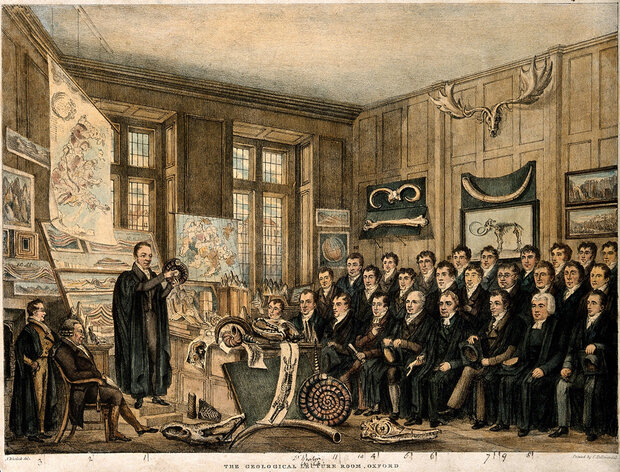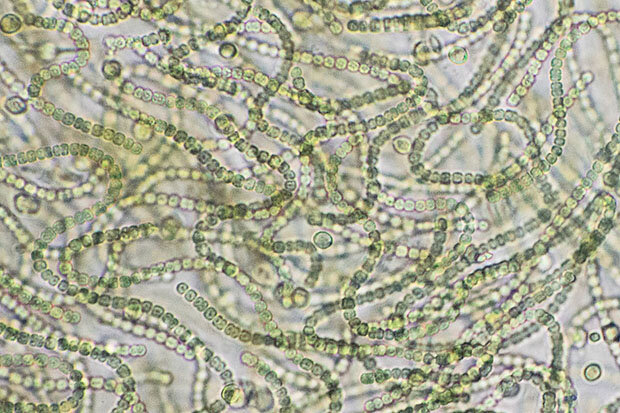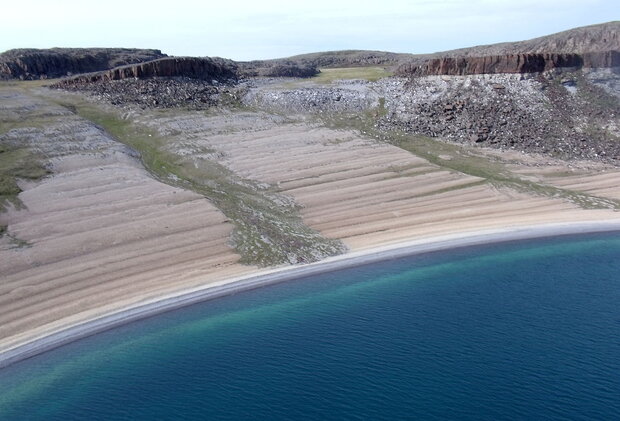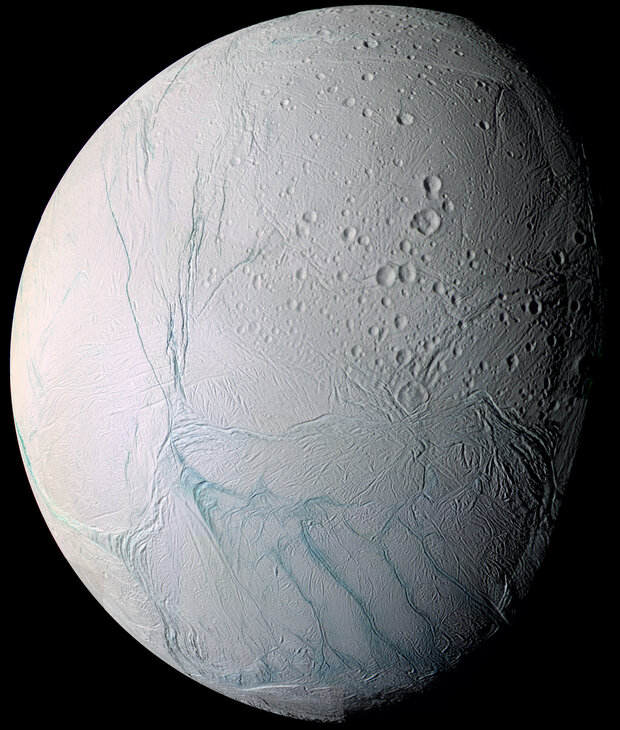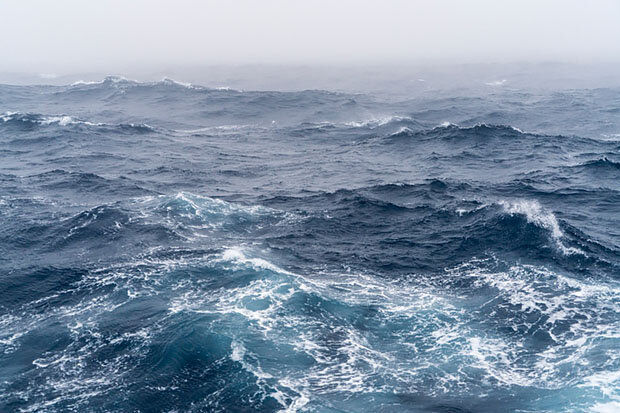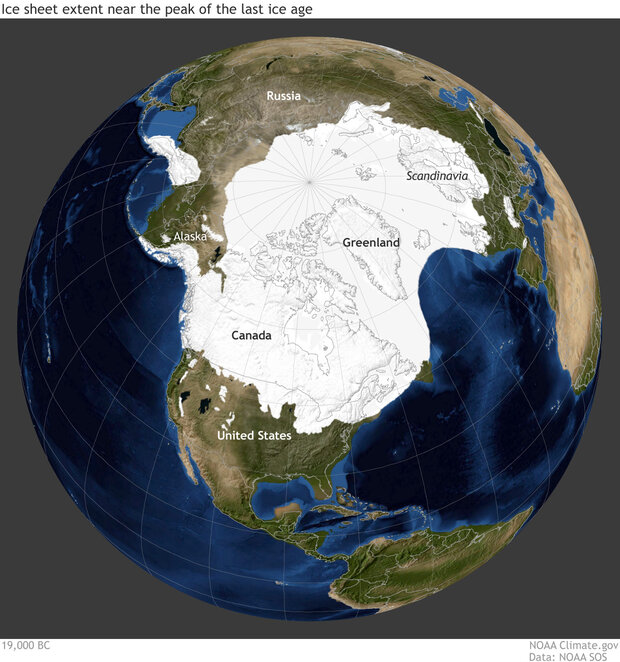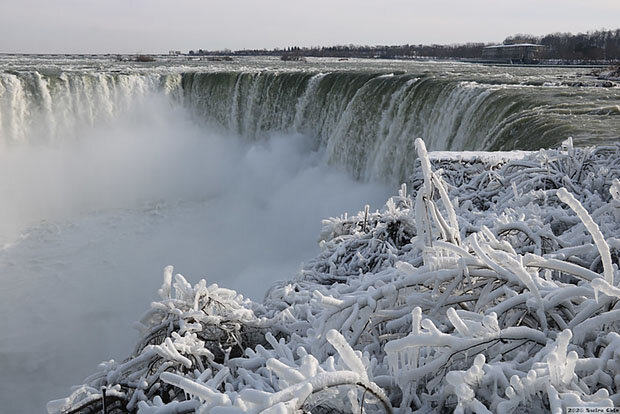What's the coldest the Earth's ever been?
This article is one of a three-part series on past temperatures, including the hottest the Earth has ever been and how warm the Earth has been “lately.”
For much of its history, our planet has been hotter—sometimes much hotter—than it is today. But our planet has also been colder. Scientists may never know which period in our planet’s 4.54-billion-year history was the absolute coldest, but research has revealed a few contenders. All of these periods have been identified as ancient ice ages.
Some of the coldest conditions struck over 2 billion years ago, after the rise of atmospheric oxygen. More deep freezes occurred between 750 and 600 million years ago. Although scientists debate exactly how extensive the ice coverage was during these times, the evidence indicates that ice reached sea level in equatorial regions.
In the past few million years, glaciers have blanketed huge expanses of the Northern Hemisphere off and on. Though less severe than the near-global glaciations, the Pleistocene ice ages may have brought the coldest conditions in the last half a billion years. Some of the worst cold struck about 20,000 years ago.
The coldest place on modern Earth has been identified as a high ridge between Dome Argus and Dome Fuji in East Antarctica. Each year, scientists with the Japanese Antarctic Research Expedition journey from the Antarctic coast to Dome Fuji Station. CC license by Flickr user SNSF Scientific Image Competition / Francesco Comola.
Reading the rock record
An ice age is a period of colder-than-usual global temperatures and bigger-than-usual glaciers and ice sheets. Ice ages don’t bring unrelenting cold. Instead, relatively warm periods intervene, so ice ages are a mix of advancing glaciers (glacials) and retreating glaciers (interglacials). Though relatively warm, interglacials are still part of a glacial epoch.
How do scientists know ancient ice ages happened? Clearly, thermometers weren’t handy when continental-scale glaciers advanced toward the equator. The evidence for past ice ages comes instead from geology. Soon after the scientific discipline emerged in the early 19th century, geologists began finding clues left by ancient ice bodies. Glaciers, geologists realized, could leave giant scratch marks on bedrock and carry boulders to distant landscapes, often dropping those rocks at sea.
Once the signs of glaciation were recognized for the Pleistocene Epoch (roughly 2.6 million to 11,000 years ago), geologists knew how to recognize them in older rocks. Combining the evidence for glaciation with the evidence for plate tectonics and continental drift has enabled geologists to identify glacial activity from hundreds of millions of years ago, when continents were configured very differently.
After years of explaining geologic phenomena as the result of the Noachian flood, the 19th-century British geologist William Buckland accepted the evidence for glacial action. He became a proponent of the Ice Age theory. Image credit: Wellcome Collection. Attribution 4.0 International (CC BY 4.0)
In all, scientists have identified upwards of a dozen ice ages in the geologic record, several of them in the last half a billion years. Some of the ice ages that struck even earlier were worse, probably the worst ice ages in our planet’s history.
The rise of oxygen and the fall of temperatures
Among the earliest ice ages so far found in the geological record are the Huronian ice ages. At least one of them constituted what geologists call a Snowball Earth event, when the planet’s surface was entirely, or almost entirely, frozen. Interspersed with non-glacial periods, the ice ages occurred between 2.4 and 2.1 billion years ago, and probably resulted from changes in microscopic life.
Paleontologists surmise that when microbial life arose on Earth over 3.5 billion years ago, microbes neither made nor needed oxygen. Instead, when life evolved, Earth’s atmosphere was very different from what we experience today. Although nitrogen levels may have been similar, other gases were much more—or much less—abundant. Carbon dioxide was anywhere from 10 to 2,500 times present levels, and methane may have been as much as 10,000 times higher than present levels. Atmospheric oxygen was virtually nonexistent.
Before oxygen accumulated in Earth’s atmosphere, our planet probably looked not like a pale blue dot but instead like a pale orange dot. Image credit: NASA Astrobiology.
Scientists debate when exactly microbes capable of carrying out photosynthesis and making oxygen as a byproduct first evolved. Estimates range from about 3.5 to 2.5 billion years ago. The earliest oxygen makers were probably ancestors of modern cyanobacteria, or blue-green algae.
At first, the oxygen produced by these early photosynthesizers probably reacted with iron in the ocean, settling into layers of rusty sediment on the seafloor before starting to accumulate in the atmosphere. Some oxygen reacted with methane, converting it to carbon dioxide and water. Meanwhile, photosynthesizing microbe populations kept growing, consuming more carbon dioxide.
Ancestors of modern cyanobacteria (blue-green algae) may have been the first oxygen producers on planet Earth, and ushered in significant changes in climate. CC license by Flickr user Richard Droker.
Carbon dioxide is a greenhouse gas, and methane is an even more potent greenhouse gas. As atmospheric concentrations of these greenhouse gases dropped, global temperatures plummeted, plunging the planet into a series of ice ages. The Huronian ice ages and non-glacial periods separating them likely lasted a total of 300 million years. Evidence suggests these glaciations reached equatorial regions at sea level. (Ice occurs in equatorial regions today, but only at high elevations.)
Geologic evidence of these ice ages was first discovered in 1907, in glacial deposits near Lake Huron. Since then, geologists have discovered more evidence elsewhere in North America, as well as in South Africa, Western Australia, and northeastern Europe.
Found near Whitefish Falls, Ontario, along the northern shore of Lake Huron, this dropstone landed in seafloor sediments under a floating glacier some 2.2 billion years ago. Image from Precambrian Time—The Story of the Early Earth, photo by D.A. Lindsey, USGS.
The rise of oxygen did more than freeze the planet. It also enabled the evolution of oxygen-breathing complex life, and formed Earth’s ozone layer, which helps protect life from harmful ultraviolet radiation.
Another deep freeze
Brutal cold struck again during stretch of Earth’s history known as the Cryogenian Period. At least twice between 750 and 600 million years ago, Earth fell into a deep freeze. Because the Cryogenian Period events occurred during a longer geologic era known as the Neoproterozoic Era, the deep freezes are sometimes referred to as the Neoproterozoic Snowball Earths.
Scientists continue to debate the causes of Neoproterozoic freezes and the subsequent thaws. Volcanoes may be the force that both pushed the planet into the glaciations and also pulled it out. About 750 million years ago, most continents were clustered around the equator. Within this continental mix, geologists have identified evidence of what they call a large igneous province. "Large" is an understatement—imagine a volcanically active area the size of a continent. Eruptions in this province could have cooled the planet in two ways.
Evidence of the once-equatorial large igneous province that may have kickstarted the Cryogenian is preserved in Nunavut, Canada. Sills—intrusions of volcanic material into older rock layers—cut across older, sand-colored rock. The bands in the lighter rock result from the coastline rising after the glaciers that had weighed down the coast retreated. Image from Mike Beauregard, Wikimedia Commons.
When volcanoes release sulfur dioxide, the gas undergoes chemical reactions in the atmosphere to form highly reflective sulfates—particles that block out sunlight, like billions of tiny mirrors. Sulfates’ cooling potential is especially strong around Earth’s equator. Likewise, when volcanoes extrude large volumes of basalt, the rock weathering that follows can cool the planet. Over time, rain, wind, and chemical changes all eat away at volcanic rocks. Rainwater and groundwater percolating through rock can dissolve carbon dioxide, stripping it from the atmosphere and ultimately trapping it as carbonate minerals such as limestone.
If global temperatures drop quickly enough, ice starts to build up, and ice’s ability to reflect most sunlight back into space cools the planet even further.
Geologists have identified two glaciations during the Neoproterozoic: the Sturtian (about 720 to 660 million years ago) and the Marinoan (about 640 to 635 million years ago). Rock layers from these times show the most extensive evidence of extreme glaciations so far found in the geologic record.
In between these deep freezes, Earth appears to have endured an equally remarkable hothouse. This climate extreme, too, might be down to volcanic activity.
Over the long term, volcanic emissions of carbon dioxide and the depletion of carbon dioxide by weathering of rocks can keep each other in check. But as ice enrobed most of the planet hundreds of millions of years ago, weathering probably slowed as conditions turned too cold for heavy precipitation. Meanwhile, increased sea ice would have reduced cyanobacteria’s access to sunlight at the ocean surface, reducing photosynthesis.
Under its icy surface, Saturn’s frozen-ocean moon Enceladus may harbor liquid water and the ingredients necessary for life. If the most extreme ice ages in Earth history were true Snowball Earth events—with no open ocean—our planet may have looked like a supersized version of Enceladus. Image courtesy NASA / JPL / Space Science Institute.
Volcanoes, however, kept cranking out carbon dioxide. With little rock-weathering or photosynthetic activity left to draw from the atmosphere, the greenhouse gas would have accumulated, leading to a gradual increase in global temperatures. Once conditions warmed enough to melt tropical ice, the temperature increase would have accelerated. After losing a significant amount of light-reflecting ice, the planet would have absorbed much more of the Sun’s energy. The subsequent big melt might have caused such dramatic, rapid weathering that it led to the second glaciation.
As in the Huronian, glaciations of the Cryogenian Period reached sea level at the equator. But just how complete the Neoproterozoic ice coverage was—whether it was a Snowball Earth or a Slushball Earth—remains an area of active research.
The latest trip to the freezer
The rock record indicates that nothing as extensive as the Huronian and Cryogenian glaciations has happened in the last 500 million years, even though geologists have found evidence of several more ice ages. Although it has some competition from cold conditions occurring between 300 and 250 million years ago, the most significant ice age in the last half a billion years may be the most recent.
Striking during the time period known as the Pleistocene Epoch, this ice age started about 2.6 million years ago and lasted until roughly 11,000 years ago.
Like all the others, the most recent ice age brought a series of glacial advances and retreats. In fact, we are technically still in an ice age. We’re just living out our lives during an interglacial.
All of human civilization—everything from the earliest scripts such as cuneiform to smartphones and tweets—has occurred within an interglacial. CC license by Flickr user Ashley Van Haeften / Wikimedia Commons.
About 50 million years ago, the planet was too warm for polar ice caps, but Earth has mostly been cooling ever since. Starting about 34 million years ago, the Antarctic Ice Sheet began to form. This might be down to South America separating from Antarctica, opening up the Drake Passage. Besides nauseating generations of ocean travelers, the Drake Passage opening created the Antarctic Circumpolar Current. Circling the now-frozen continent, the current may have reduced the amount of ocean heat reaching Antarctica, enabling Antarctic ice to form and grow.
Wind and waves make trips through the Drake Passage memorable. Its appearance due to plate tectonics maybe have contributed to the development of the Antarctic Ice Sheet. CC license by Flickr user Christopher Michel.
Another land movement likely plunged the planet into its most recent ice age. The Isthmus of Panama, the land bridge between North and South America, formed about 4.5 million years ago. Prior to its formation, the Atlantic and Pacific Oceans freely exchanged tropical waters. By cutting off that exchange and sending warm, salty ocean water northward, the isthmus increased precipitation at high latitudes in the Northern Hemisphere. Snow accumulated into glaciers and eventually into ice sheets. These massive, sunlight-deflecting ice bodies continued the planet’s cooling trend.
Once Earth was cold enough for ice sheets to form, they waxed and waned over timescales of about 20,000 to 100,000 years, due partly to Milankovitch Cycles. These largely predictable changes in Earth’s orbit include eccentricity (changes in Earth’s orbit around the Sun), obliquity (changes in the tilt of Earth’s axis), and precession (wobbling of Earth’s axis of rotation). They affect climate by changing the distribution of incoming solar energy on Earth’s surface.
Roughly 20,000 years ago, during the Last Glacial Maximum of the Pleistocene Ice Age, ice spread over much of North America and Eurasia. (High-resolution without annotations available.) Image by Climate.gov based on data from the University of Zurich Applied Sciences, provided by Science on a Sphere.
The latest ice age peaked about 20,000 years ago, when global temperatures were likely about 10°F (5°C) colder than today. At the Pleistocene Ice Age’s peak, massive ice sheets stretched over North America and Eurasia. We can thank these ice sheets and their associated melt events for the Great Lakes, Niagara Falls, and even the Channeled Scablands in Washington and Oregon.
Meltwater began spilling over the Niagara Escarpment some 12,000 years ago. Today, roughly 3,160 tons of water flows over Niagara Falls every second, a long-lasting legacy of the Pleistocene Ice Age. CC license by Flickr user Can Pac Swire.
When will the massive ice sheets once again advance toward the equator? They might not return on any schedule Milankovitch Cycles would predict. The cycles have varying effects on global climate, some stronger than others. When atmospheric carbon dioxide exceeds 300 parts per million, the gas’s heat-retention ability is strong enough to overwhelm more subtle cycles. Atmospheric carbon dioxide now exceeds 400 parts per million, and because carbon dioxide is a long-lived gas, levels at least that high may persist for thousands of years. That doesn’t mean there will never be another ice age, but its onset may be delayed.
References
Bekker, A. (2014). Huronian Glaciation. In Encyclopedia of Astrobiology (pp. 1–8). Springer Berlin Heidelberg. https://doi.org/10.1007/978-3-642-27833-4_742-4
Catling, D. C., Zahnle, K. J. (2020). The Archean atmosphere. Science Advances, 6(9), eaax1420. https://doi.org/10.1126/sciadv.aax1420
Cox, G. M., Halverson, G. P., Stevenson, R. K., Vokaty, M., Poirier, A., Kunzmann, M., Li, Z.-X., Denyszyn, S. W., Strauss, J. V., Macdonald, F. A. (2016). Continental flood basalt weathering as a trigger for Neoproterozoic Snowball Earth. Earth and Planetary Science Letters, 446, 89–99. https://doi.org/10.1016/j.epsl.2016.04.016
Earle, S. (2019). Glacial Periods in Earth’s History. Physical Geology – 2nd Edition. Accessed October 24, 2020.
Eldredge, S., Biek, B. (2010, September). Glad you asked: ice ages – what are they and what causes them? Survey Notes, 42(3).
Hayes, J. M. (2020). Evolution of the atmosphere. Encyclopædia Britannica. https://www.britannica.com/topic/evolution-of-the-atmosphere-1703862
Hoffman, P. F., Kaufman, A. J., Halverson, G. P., Schrag, D. P. (1998). A Neoproterozoic Snowball Earth. Science, 281(5381), 1342–1346. https://doi.org/10.1126/science.281.5381.1342
Joel, L. (2019, December 2). How life on our planet made it through Snowball Earth. The New York Times. Accessed January 5, 2021.
Kopp, R. E., Kirschvink, J. L., Hilburn, I. A., Nash, C. Z. (2005). The Paleoproterozoic snowball Earth: A climate disaster triggered by the evolution of oxygenic photosynthesis. Proceedings of the National Academy of Sciences, 102(32), 11131–11136. https://doi.org/10.1073/pnas.0504878102
Lechte, M. A., Wallace, M. W., Hood, A. van S., Li, W., Jiang, G., Halverson, G. P., Asael, D., McColl, S. L., Planavsky, N. J. (2019). Subglacial meltwater supported aerobic marine habitats during Snowball Earth. Proceedings of the National Academy of Sciences, 116(51), 25478–25483. https://doi.org/10.1073/pnas.1909165116
Luo, G., Ono, S., Beukes, N. J., Wang, D. T., Xie, S., Summons, R. E. (2016). Rapid oxygenation of Earth’s atmosphere 2.33 billion years ago. Science Advances, 2(5), e1600134. https://doi.org/10.1126/sciadv.1600134
Macdonald, F. A., Wordsworth, R. (2017). Initiation of Snowball Earth with volcanic sulfur aerosol emissions. Geophysical Research Letters. https://doi.org/10.1002/2016gl072335
National Park Service. Glaciers and Past Climates. Accessed October 24, 2020.
Renwick, J. (2019, September 17). Climate explained: why we won’t be heading into an ice age any time soon. The Conversation. Accessed October 24, 2020.
Scher, H. D., Martin, E. E. (2006). Timing and Climatic Consequences of the Opening of Drake Passage. Science, 312(5772), 428–430. https://doi.org/10.1126/science.1120044
Schirber, M. (2015, August). “Snowball Earth” Might Have Been Slushy. NASA Goddard Institute for Space Studies. Accessed October 24, 2020.
Young, G. M. (2013). Evolution of Earth’s climatic system: Evidence from ice ages, isotopes, and impacts. GSA Today, 4–10. https://doi.org/10.1130/gsatg183a.1

